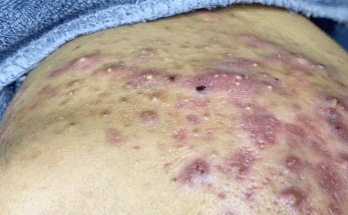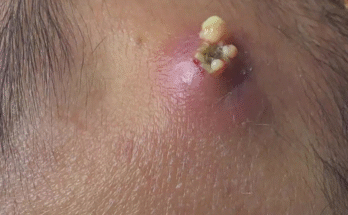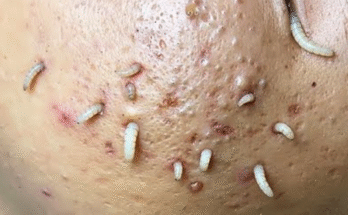Understanding Earlobe Cysts: A Comprehensive Guide
Earlobe cysts, often appearing as innocuous bumps, are generally benign growths forming beneath the skin. While sometimes simply called “bumps on the earlobe,” a more precise understanding helps manage expectations and treatment. Let’s delve into the details.
What Exactly is an Earlobe Cyst?
The Nature of the Beast
An earlobe cyst is a closed sac residing under the skin, typically filled with keratin (a skin protein) and sometimes sebum (an oily substance). This occurs when a sebaceous gland or hair follicle becomes obstructed, preventing the natural shedding of skin cells. The medical terms for these cysts are epidermoid cysts and sebaceous cysts; while slightly different, they are frequently used interchangeably.
Causes of Earlobe Cysts: Unlocking the Origins
Several factors contribute to the formation of earlobe cysts. Understanding these can help in prevention and management:
Blocked Glands and Follicles
A common culprit is the blockage of hair follicles or sebaceous glands. This can stem from trauma to the earlobe, pre-existing skin conditions like acne, or simply the natural accumulation of oils and cells.
Piercings: A Potential Trigger
Ear piercings, popular adornments, can sometimes introduce bacteria or cause irritation leading to cyst formation. The trauma of piercing and subsequent healing process can disrupt the natural balance of the skin.
Genetics and Predisposition
A family history of cysts suggests a possible genetic predisposition. This indicates a heightened susceptibility, although not a guaranteed occurrence.
Skin Injuries: A Contributing Factor
Any injury to the earlobe skin can trigger an abnormal cellular response, potentially leading to cyst formation. Minor scrapes or more significant injuries alike can contribute.
Recognizing the Signs: Symptoms of Earlobe Cysts
Identifying an earlobe cyst is usually straightforward:
Typical Presentation
Typically, they present as small, round bumps beneath the skin’s surface. Many are painless, but some may exhibit mild tenderness. Growth is usually slow.
Signs of Infection
An infected cyst displays more noticeable symptoms: redness, swelling, pain, warmth to the touch, and potentially the release of pus or discharge. This necessitates prompt medical attention.
Diagnosis and Evaluation: Determining the Next Steps
Diagnosis typically involves a physical examination by a doctor. Further investigation, such as a biopsy or imaging scan, is usually unnecessary unless the cyst is unusually large, painful, recurring, or shows changes in shape or color. This more thorough approach helps rule out other, potentially more serious conditions.
Treatment Options: A Range of Approaches
Treatment options vary depending on the size, symptoms, and the patient’s preferences.
1. Watchful Waiting: The Conservative Approach
For small, asymptomatic cysts, a “wait-and-see” approach is often adopted. Many cysts remain stable or even resolve spontaneously.
2. Warm Compresses: Soothing Inflammation
Applying warm, moist compresses can help reduce inflammation and promote drainage, particularly for inflamed but uninfected cysts. This offers a gentle, at-home management option.
3. Medical Intervention: Antibiotics and Drainage
Infected cysts require antibiotics (oral or topical) to combat the infection. Painful or pus-filled cysts may necessitate drainage by a medical professional, relieving pressure and improving healing.
4. Surgical Removal: The Definitive Solution
Surgical removal is the most effective approach for recurrent or large cysts, preventing future recurrence. This minor procedure is performed under local anesthesia and results in a small scar. Crucially, never attempt to drain or lance a cyst at home; this dramatically increases the risk of infection and scarring.
When to Seek Professional Help
Consult a healthcare professional if:
- The cyst becomes painful, red, or swollen, indicating potential infection.
- There’s a significant increase in size or any alteration in appearance.
- The cyst ruptures or discharges pus.
- You have cosmetic concerns or anxieties about the cyst.
Rare Cases and Further Considerations
While typically benign, earlobe cysts can occasionally grow quite large (as evidenced by reported cases of giant epidermoid cysts) or present complexities, such as association with recurrent keloids. In such instances, specialized medical attention and potentially more extensive treatment are warranted.











